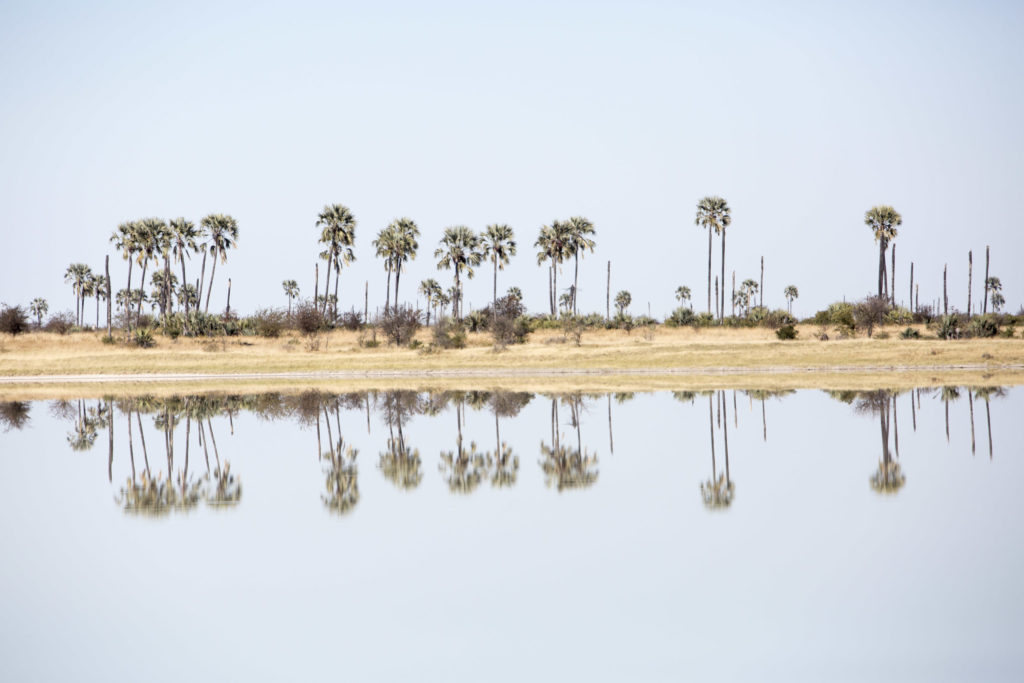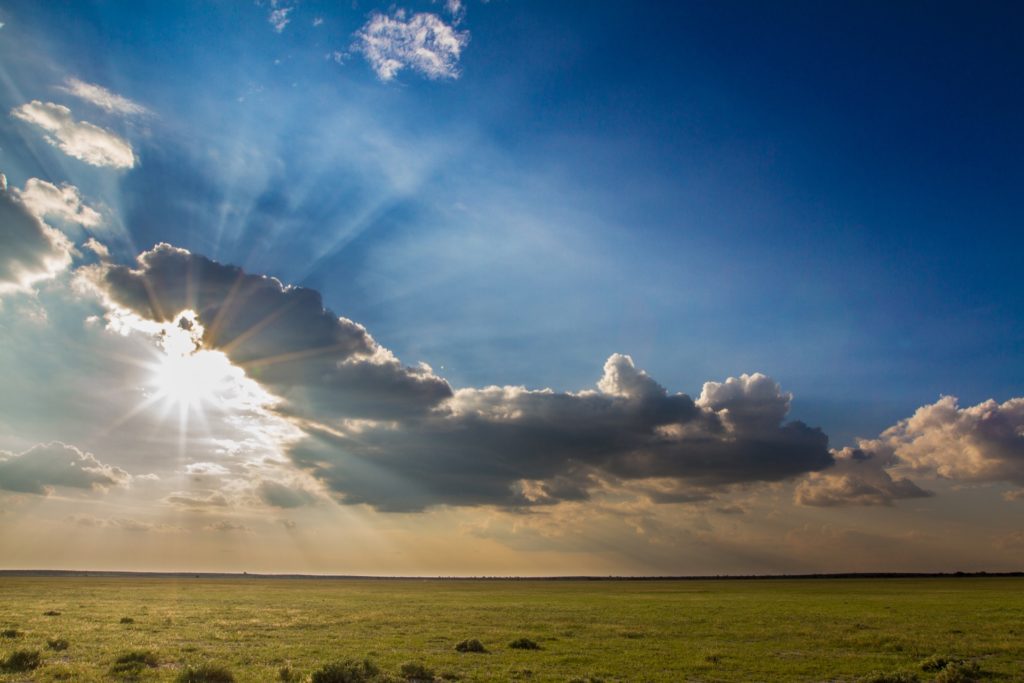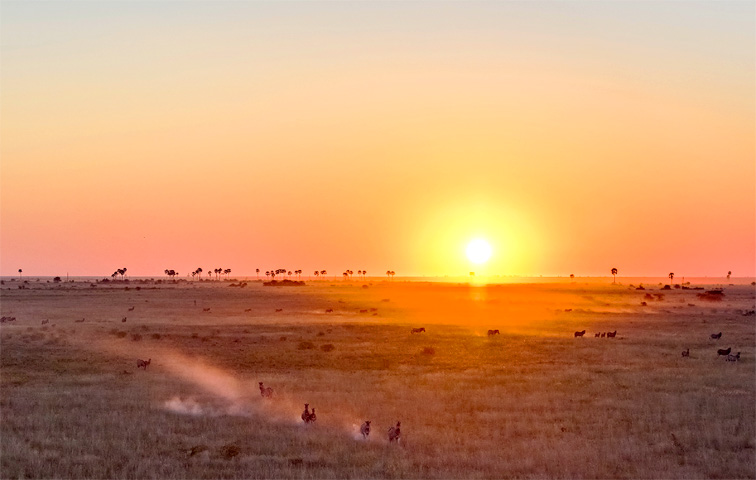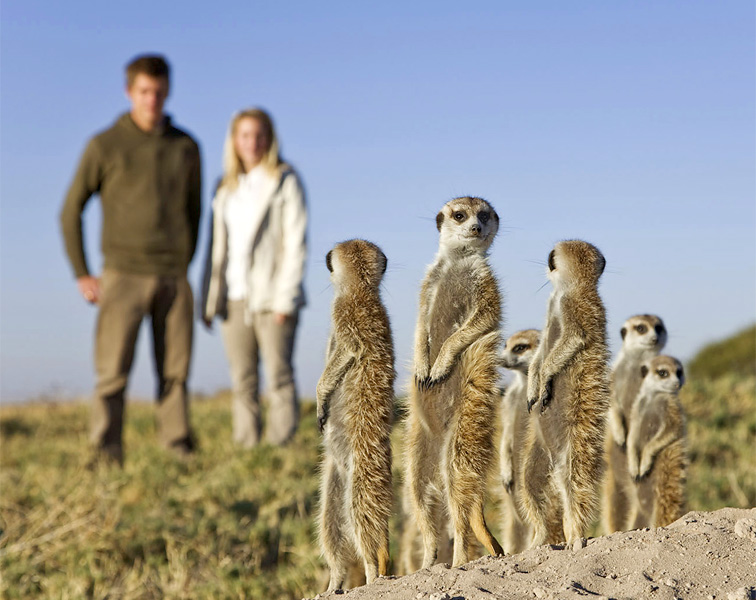A look at the various (and varied) regions that make up Botswana’s Kalahari
One of our all time favourite destinations within Botswana is the Kalahari. This vast, semi-arid sandy savanna covers so much of the country and extends into South Africa and Namibia.
We will talk about the Kalahari in Botswana here because it’s one of our favourite desert destinations and easy to include in a holiday in Botswana.
Botswana’s Kalahari comprises four areas namely the Central Kalahari Game Reserve, Makgadikgadi National Park, Makgadikgadi Pans and Nxai Pan National Park.
Each area is unique which means experiences, game viewing and activities differ quite considerably depending on the area visited. For clients to get the most out of their visit to the Kalahari try and establish which area they want to visit and what their expectations are.
Scroll down for more

Weather patterns in the Kalahari
September – December: expect extremely hot weather with temperatures in the high 30° – early 40°c. The heat is offset by great game viewing as the wildlife concentrates around artificial water holes.
December – March: the heat is not as relentless and the rains come. Once it rains the desert comes to life – it literally blooms. Wildlife disperses from the water holes but you still see animals on the pans.
April – May: This is perhaps the best time to visit from a temperature perspective. During late May a cold front may come through so rug up. This is a paradise for photographers as the light is superb, air quality clear and smaller species venture out of their holes in order to soak up the early morning rays of sunlight.
June – July: skies are clear, days are warm, and nights are very cold. The wildlife is well dispersed.
August: Within days, the weather turns from winter to summer and your temperatures go from mild to hot. Visibility is good and game starts to concentrate once again around the waterholes.
Scroll down for more

Central Kalahari Game Reserve (CKGR)
Central Kalahari Game Reserve (CKGR) is situated in the centre of Botswana and is the largest and most remote reserve in southern Africa. At 52,800 square kilometres it is the second largest wildlife reserve in the world. To put this into perspective, CKGR is 1.5 times the size of Belgium! December is a month of change as this is when the summer rains arrive. It doesn’t take too many downfalls before the barren desert vegetation is transformed into a luscious green visual feast. The plains burst with sweet grasses and wildflowers and the flat grasslands of the reserve’s northern reaches teem with wildlife as they revel in this time of plenty. For the animal kingdom this means food, water and lots of babies! Herds of several thousand springbok, red hartebeest, zebra and gemsbok (oryx) grow in numbers as females give birth to their young. Predators abound with plentiful lion, especially the famous Kalahari black-maned lion and cheetah. Rare brown hyena, black-backed jackal, wild dog and rarely spotted leopard are also present. General game include giraffe, eland, kudu, steenbok, bat-eared foxes, Cape fox, honey badgers and African wild cat.
Department of Wildlife and National Parks regulations don’t permit off road driving, night driving and walking. Both Tau Pan and Kalahari Plains offer San Bushman cultural walks which are conducted close camp.
Why visit?
- Stark beauty, space, seclusion – a true wilderness destination
- The onset of the rains makes for dramatic and beautiful cloud formations
- Big sky country where light pollution is minimal, nights are crystal clear and star-gazing is unrivalled
- Visit renowned Deception Valley. Documented in the international bestseller Cry of the Kalahari, Deception Valley is the most famous part of CKGR and is one of the best areas for wildlife
- Offers so much on so many different levels including a diversity of species that may not be found in other parts of Botswana
- Excellent birdlife, especially raptors during Mar-Apr
Scroll down for more

Nxai Pan
Nxai Pan is an extension of the Makgadikgadi National Park and less frequently visited. This saucer like pan is around 40 square kilometres and was once the bed of a super lake that covered most of central Botswana including the Okavango Delta, the vast Makgadikgadi salt pans and Lake Ngami. Comprising a series of fossilised pans Nxai Pan National Park is covered by grass and interspersed with islands of umbrella acacias and clumps of mopane woodland. It is also home to Baines’ Baobabs, a cluster of ancient baobab trees which were visited by explorers of yesteryear and were immortalised in paintings by the artist and adventure Thomas Baines in 1862.
Once the first rains have fallen in early December Nxai Pan transforms from a dry wasteland into a veritable Garden of Eden. This is when the elephants move out and the zebra and wildebeest move in. Seasonally thousands of zebras migrate from the Chobe/Linyanti to graze on fresh, highly palatable grass and to drop their young. An abundance of baby zebra and springbok attract many predators – lion, cheetah, jackal and both the spotted and the elusive brown hyena. There are large numbers of bat-eared fox and raptors that prey on the rodents and reptiles. At this time of year bird life is excellent, especially raptors.
By mid to the end of March, the wildlife viewing dynamics change bercause the natural water holes start to dry up and the zebra herds head north. Some resident wildlife remains and congregate around a handful of pumped pans. During the dry, barren winter months (May to November) elephant, in ever increasing numbers, jostle for position at the waterholes. Mixed game species include herds of giraffe, wildebeest, oryx, kudu, steenbok, bat eared foxes and honey badger. On occasion eland and buffalo may be spotted. Interestingly both impala and springbok are found here, generally these two types of animal live in different terrains and are rarely found in the same area.
Again, the Department of Wildlife and National Parks regulations don’t permit off road driving, night driving and walking. It’s important to note that during periods of heavy rain the clay roads become waterlogged and difficult to negotiate. Short interactive San Bushman walks are conducted by trackers in the area around camp.
Why visit?
- Speckled with acacia trees the landscape resembles that of the Serengeti plains
- Untouched, pristine and remote – here one can truly enjoy the sound of silence
- December -March experience the zebra migration
- Only one semi-permanent camp namely Nxai Pan which is located on the western edge of Nxai Pan
- Learn about both the traditional and contemporary San bushman way of life
Scroll down for more

Makgadikgadi Pans National Park & Makgadikgadi Pans
Makgadikgadi National Park and the ‘Pans’ are two distinctly different areas where seasonality dictates game movements and activities offered by the camps in the areas.
Meno a Kwena and Leroo La Tau are situated on a bank overlooking the Boteti River which forms the western border of the National Park. Due to their remote location within the Makgadikgadi Pans National Park, the Makgadikgadi Pans themselves are not visited on daily scheduled activities from either camp. If visitors want to experience the seemingly endless shimmering white ‘moonscape’ of the salt pans they must stay at either San Camp, Jacks Camp, Camp Kalahari or Planet Baobab.
The Makgadikgadi Pans National Park is an area of 3,900 km². The park stretches from the Boteti River in the west through an interior of scrubland and mineral-rich grasslands to the pans in the east. The only permanent source of water source in the area, the Boteti River, attracts a variety of resident as well as up to 30,000 migrating zebras in the dry season.
Why visit?
- From the end of April and early May, be dazzled by the arrival of the first of migrating zebra
- The Boteti River is part of a complex river system – in 2008 it flowed for the first time in 17 years
- During the wet summer months there is an influx of migratory bird species
- Walk with San Bushmen at Meno a Kwena
Scroll down for more

The Makgadikgadi Pans which is the 6th most nutrient rich area on earth covers an area of 12,000 square kilometres and incorporates a series of pans, the two main ones being Sowa Pan in the east and the larger Ntwetwe Pan in the west. The pan system was once part of a massive super lake that covered most of the north of Botswana and is today believed to be one of the largest salt pans in the world. Its stark, flat, featureless terrain stretches, it would seem, to eternity, meeting and fusing with a milky-blue horizon. For much of the year, most of this desolate area remains waterless and extremely arid so it is not surprising that astronauts can see its outline from outer space.
As soon as the rains arrive, the desert transforms into a green oasis teeming with life. Within days thousands of Burchell’s zebra and blue wildebeest make their way across the Makgadikgadi National Park in the west to feed on the sweet summer grasses and enjoy the benefits of the mineral-rich saltpans. The rains also herald the arrival of water birds. Waders, ibis, ducks, geese, storks, as well as the rare wattle crane can be seen during this time, and towards the end of the season massive flocks of flamingo rest on the pans before continuing their migration.
Why visit?
- Makgadikgadi Pans is the only place in Botswana were one can interact with habituated meerkats
- Year-round sightings of the rare brown hyena
- Vast open space, timelessness and complete nothingness
- Anthropological and archaeologically fascinating
- Eerie, desolate and other worldly Kubu Island is a beautiful spiritual place with a deep and interesting history
- During the dry season (01 Jun-31 Oct) explore the pans by quad bike
- During the wet season (01 Nov-30 Apr) experience vast herds of zebra and wildebeest
- During the dry season, excellent dessert game viewing around the pumped water holes of elephant, zebra, wildebeest, kudu, springbok, hartebeest, oryx and all the smaller dessert species.
- Night game drives to see the rarely seen elusive dessert animals, a very good chance of seeing aardwolf, porcupine, honey badger, bat eared fox, silver fox, black footed cat.
- Extensive cultural experience with the San Bushmen, possible as a single walk or as a multi-day experience.
- Learn about dessert adaptations of a vast variety of dessert plants, animals and birds.
- Offer visitors a complete new suite of animals not seen in the rest of northern Botswana’s Okavango and Chobe’s eco system.
